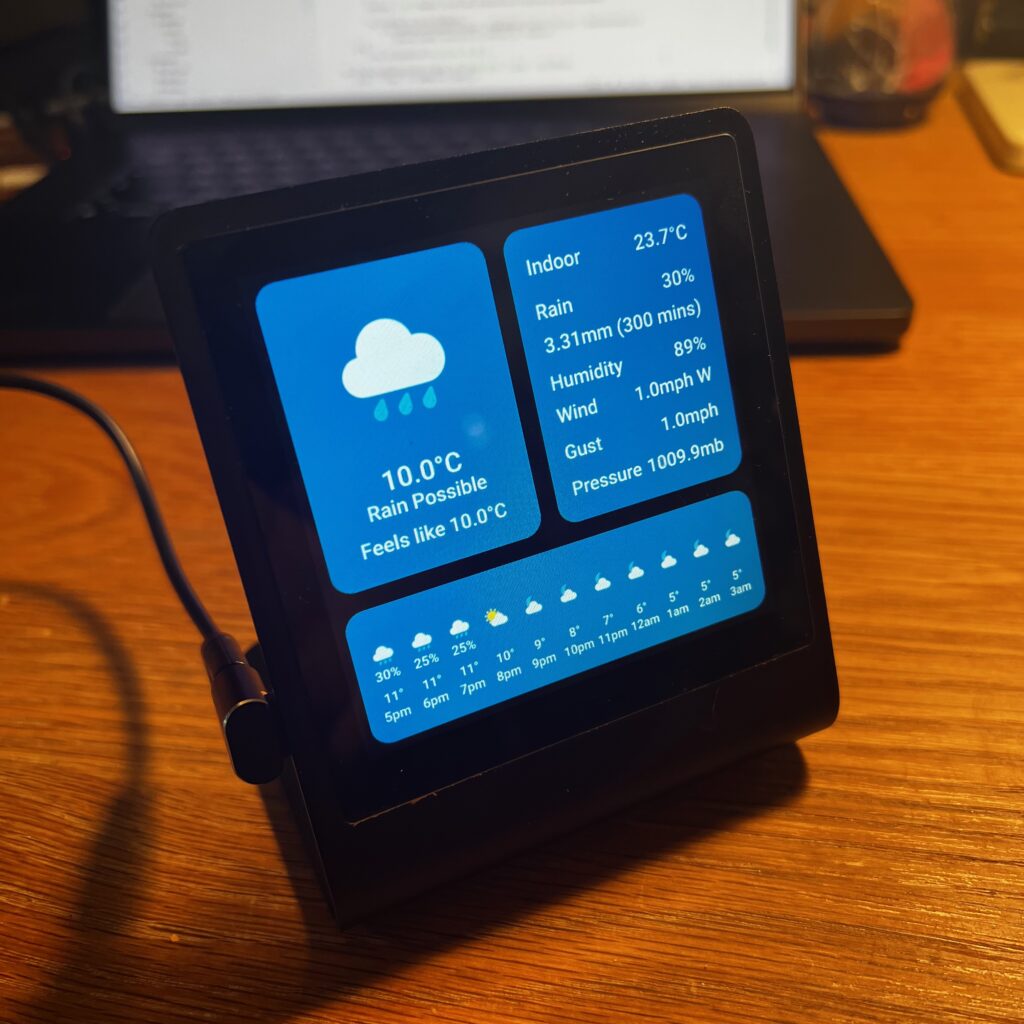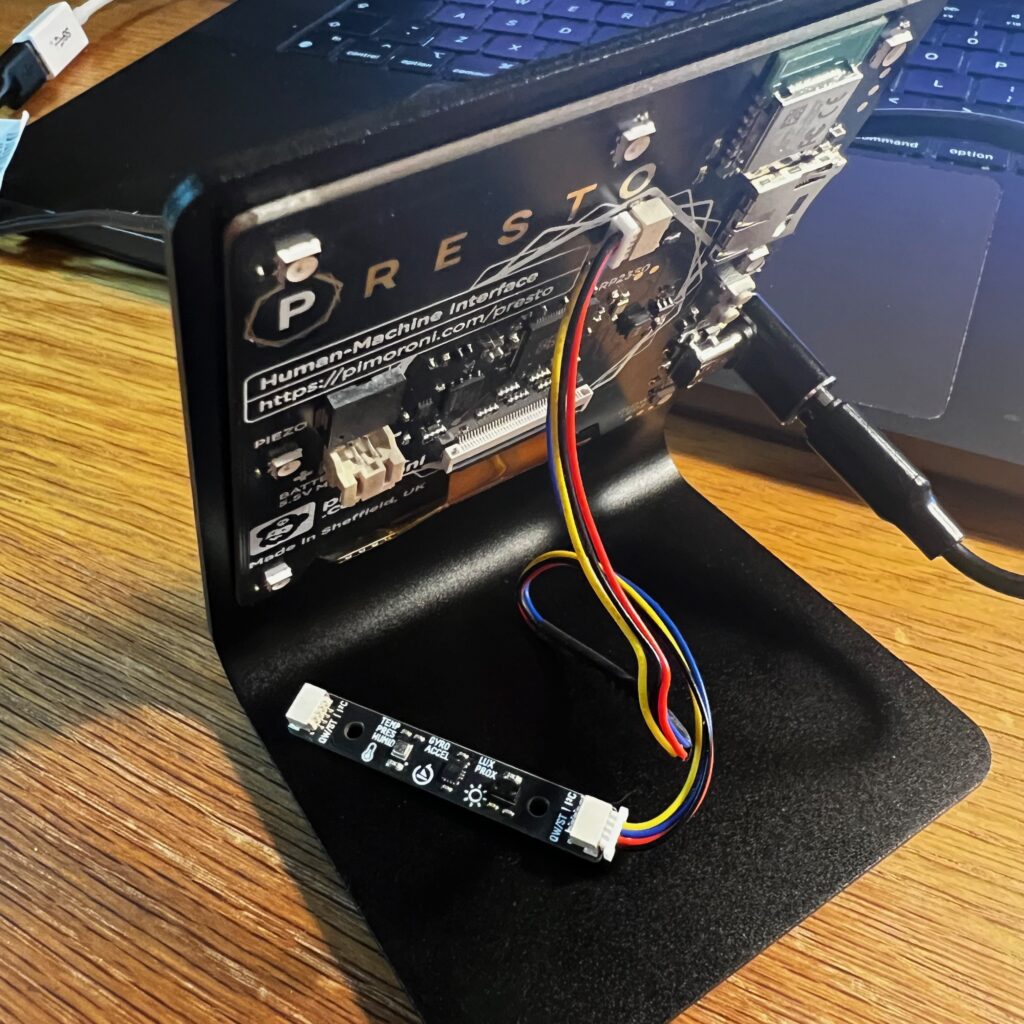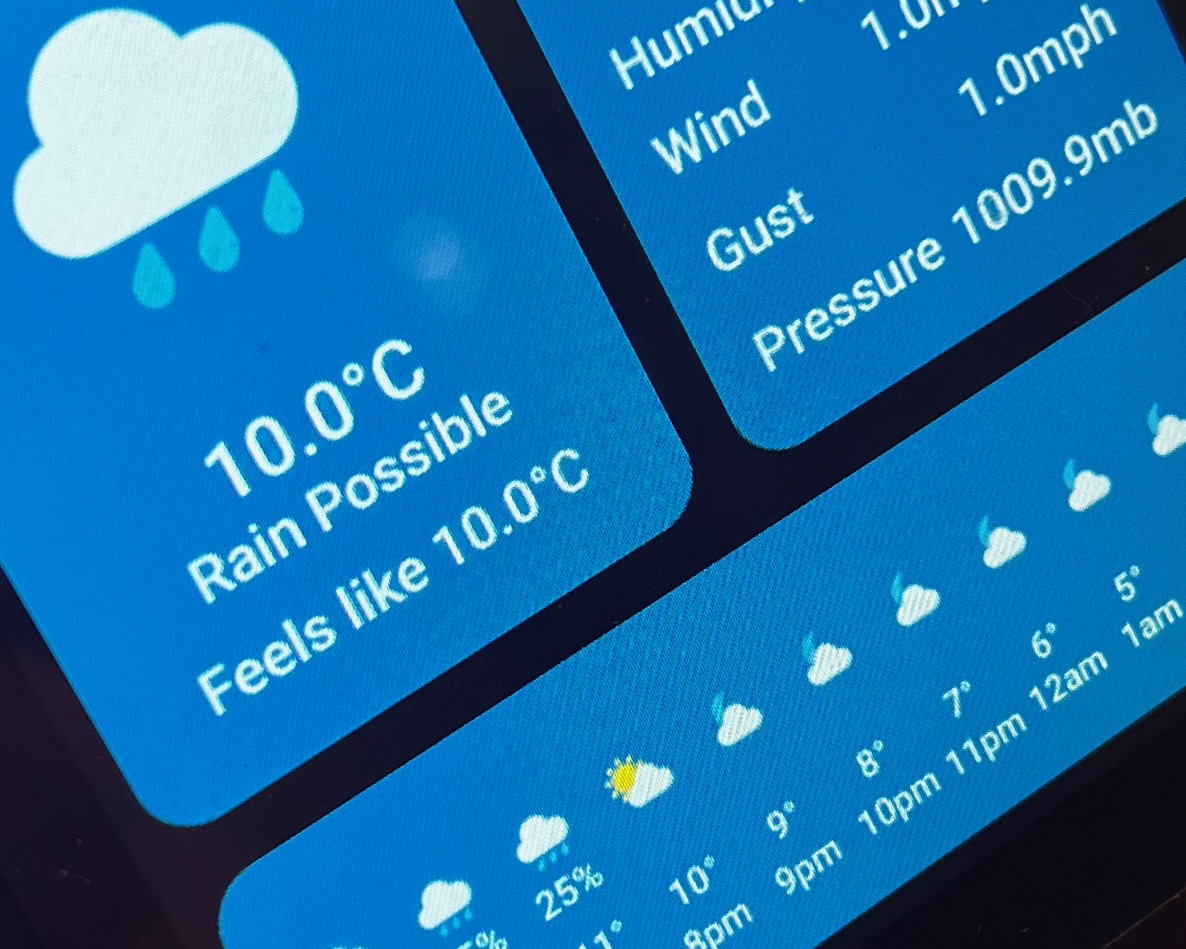A little while ago, I stumbled upon a nifty little device from Pimoroni called Presto. It’s an RP2350 microprocessor and a 480×480 touch screen mounted onto an aluminium stand. All in all, it’s a very neat little device. Without further ado, I ordered one.
When it arrived a few days later, I was immediately impressed – it looked rather smart and the build quality was very good. It comes with a bunch of demos, written in MicroPython, which provide a good showcase of apps highlighting just what this thing can do.
I already had a clear idea of what I wanted to do with it though – I recently got a Tempest weather station. This relies on a phone app to see the data, which works well, but I really wanted to have something in the house that I could quickly glance at to see the current forecast. The Presto looked perfect for that.
So, a couple of weekends later, I now have a weather display sat on the windowsill.

The Presto Starter Kit also adds a few extras including a multi-sensor stick, containing a temperature/humidity sensor and a light sensor (there’s also an accelerometer, but that’s not so useful here). I’m currently using it to display the indoor temperature – I want to have it display the indoor humidity too, but I’ll need to tinker with the screen layout a bit to get that to fit. The light sensor means that I can have the display automatically dim when the room is darker, so it doesn’t dazzle you.

The software is all written in MicroPython and I’ve made it available on GitHub. The version of MicroPython that comes preinstalled on the Presto comes fully equipped with libraries to talk to all the hardware and sensors involved, and includes PicoGraphics and PicoVector which makes writing the software a breeze.
My Presto is now fully functional as a weather display, but it’s still really a work-in-progress. I want to extend it and make use of the touch screen to allow you to drill down into the weather data – showing more details, historical graphs, weekly forecasts and more. I’ll definitely be continuing to develop this over time.
All in all, I’m very pleased with this little device – I definitely recommend it.

Leave a Reply